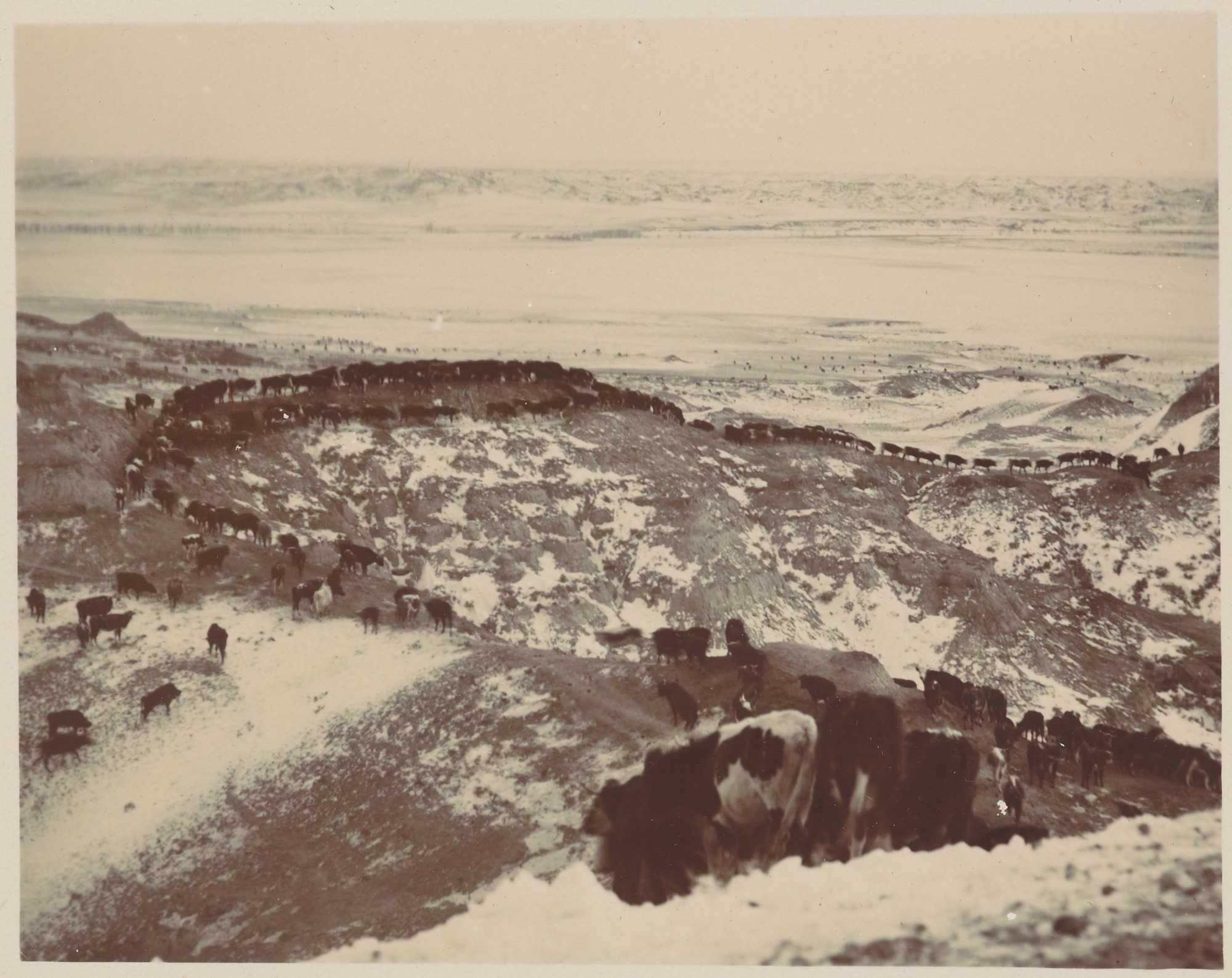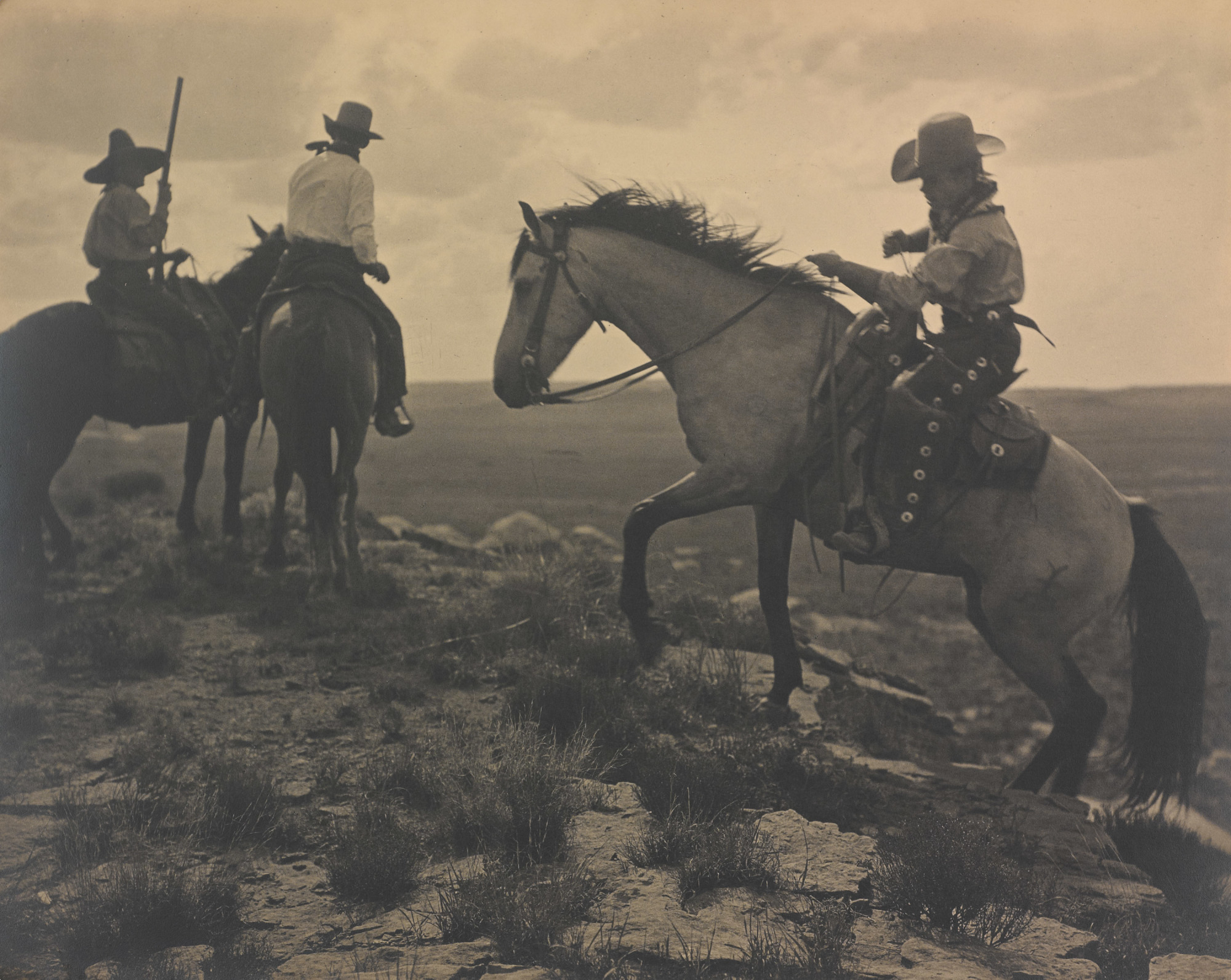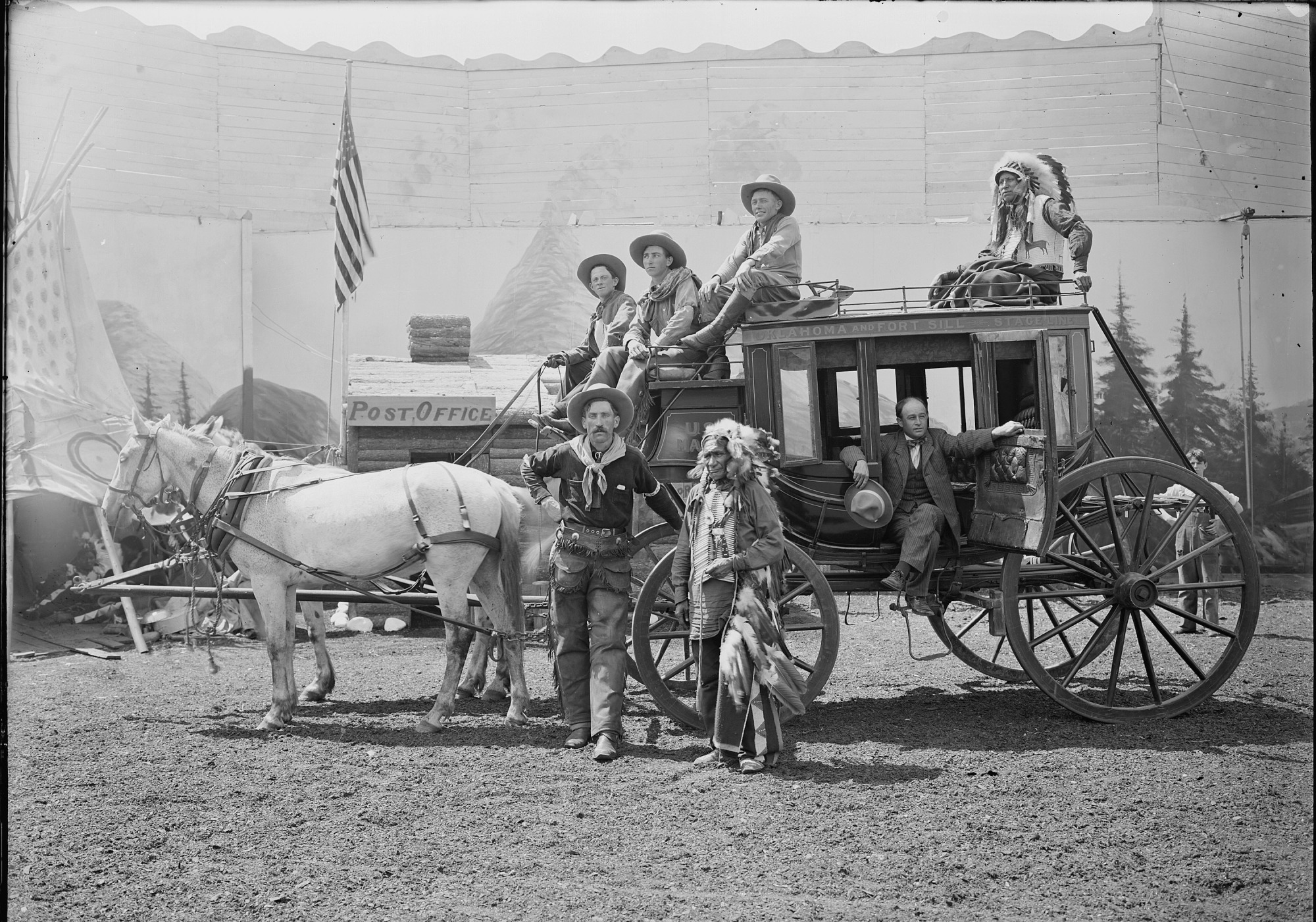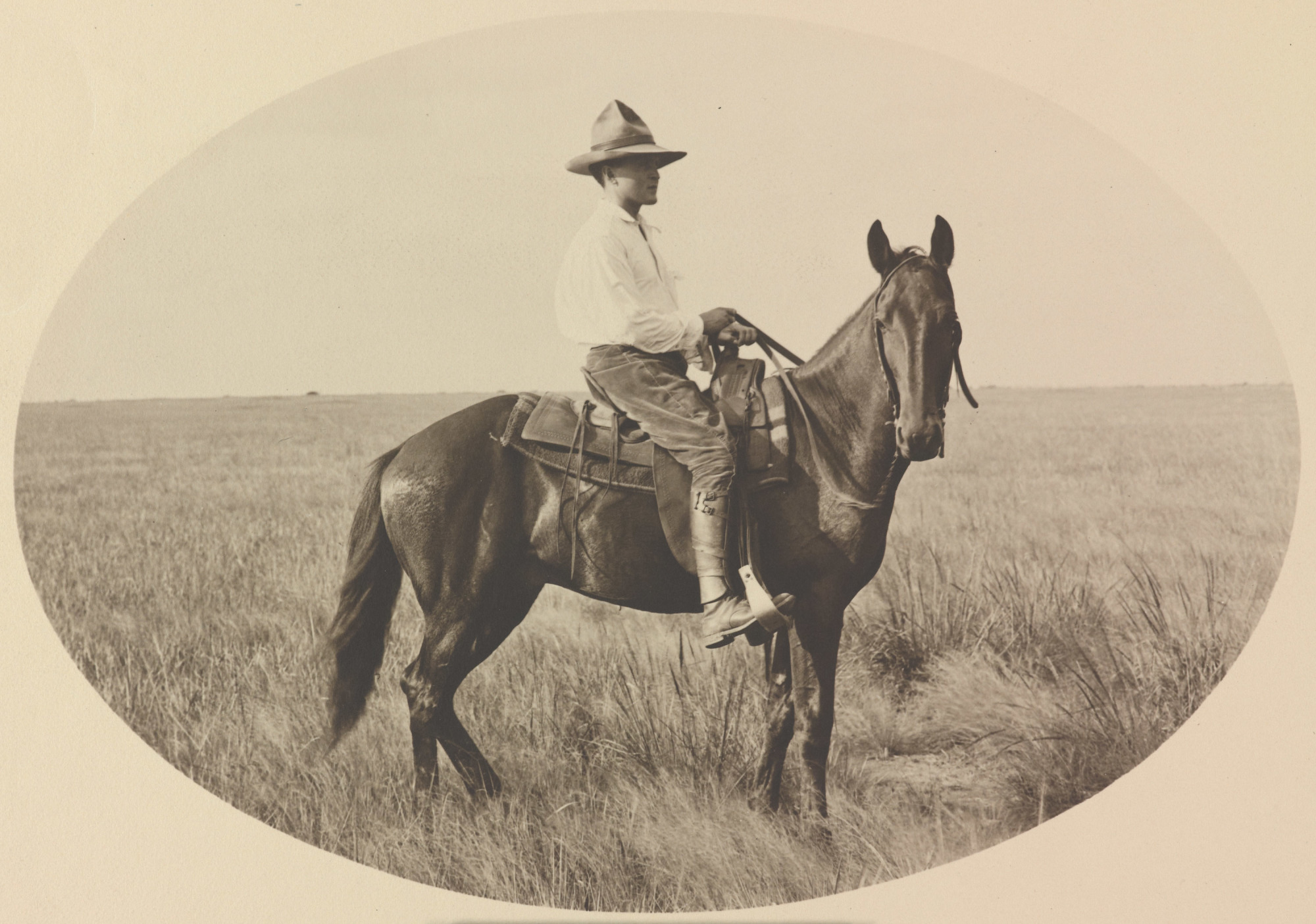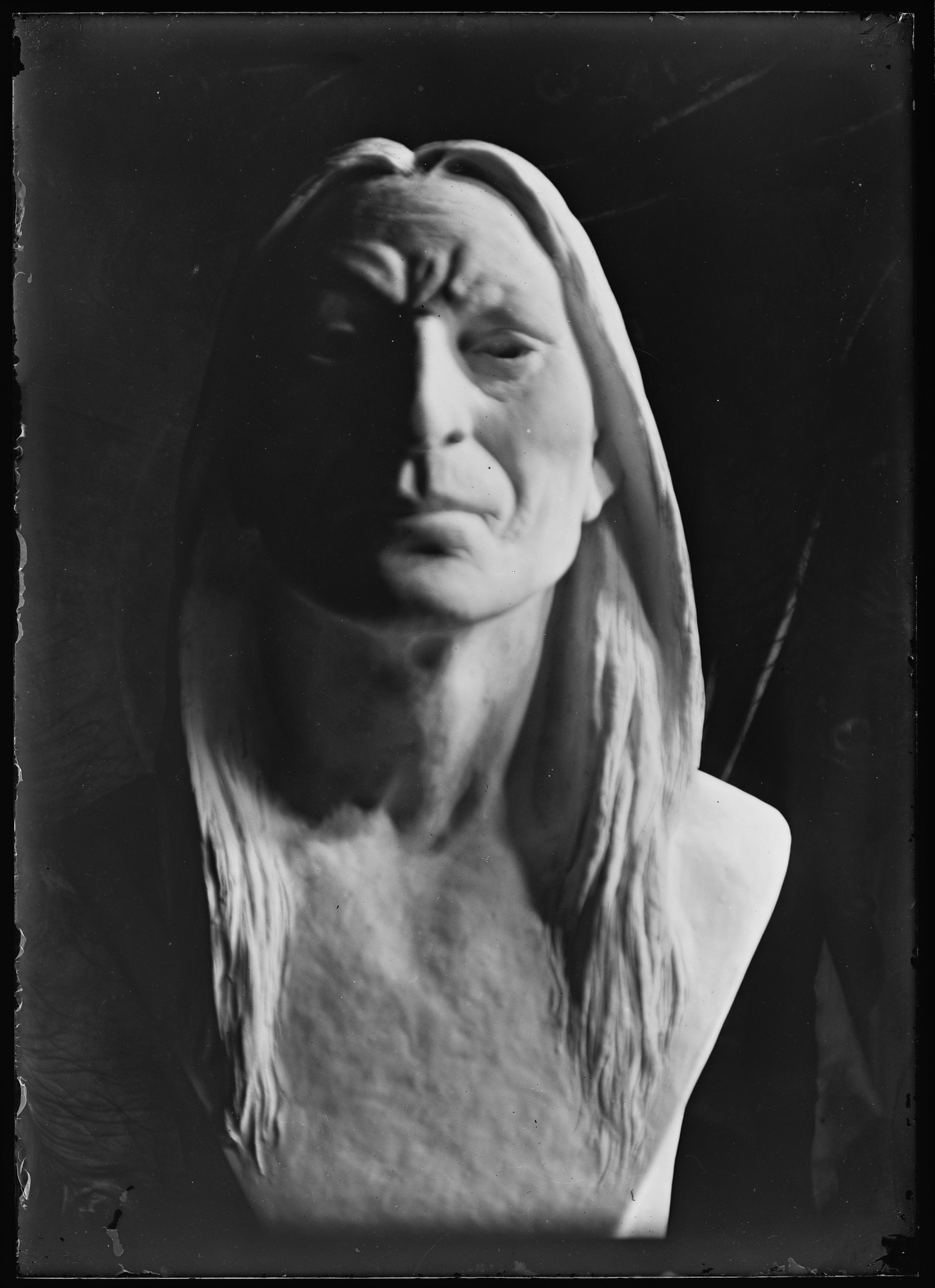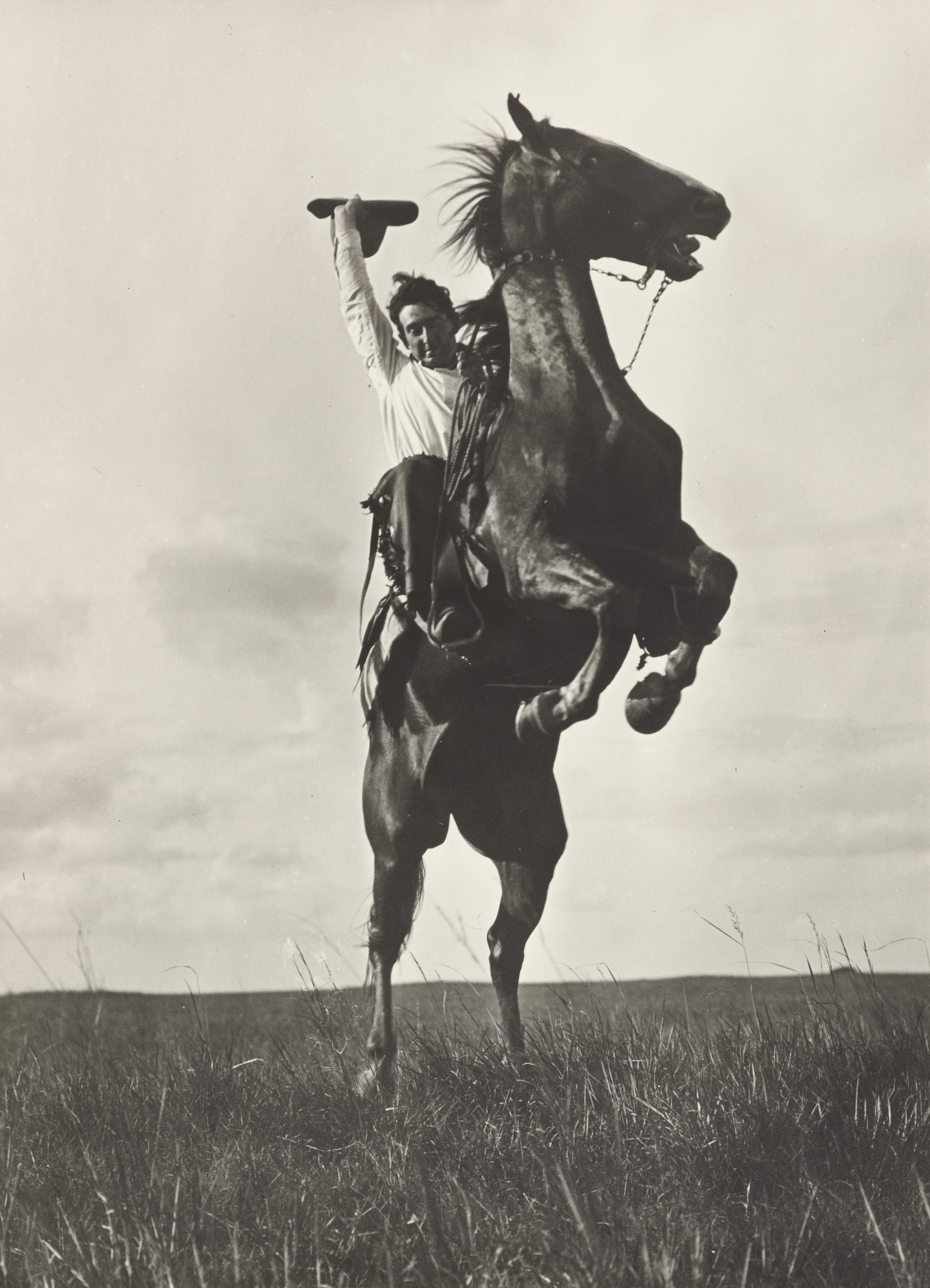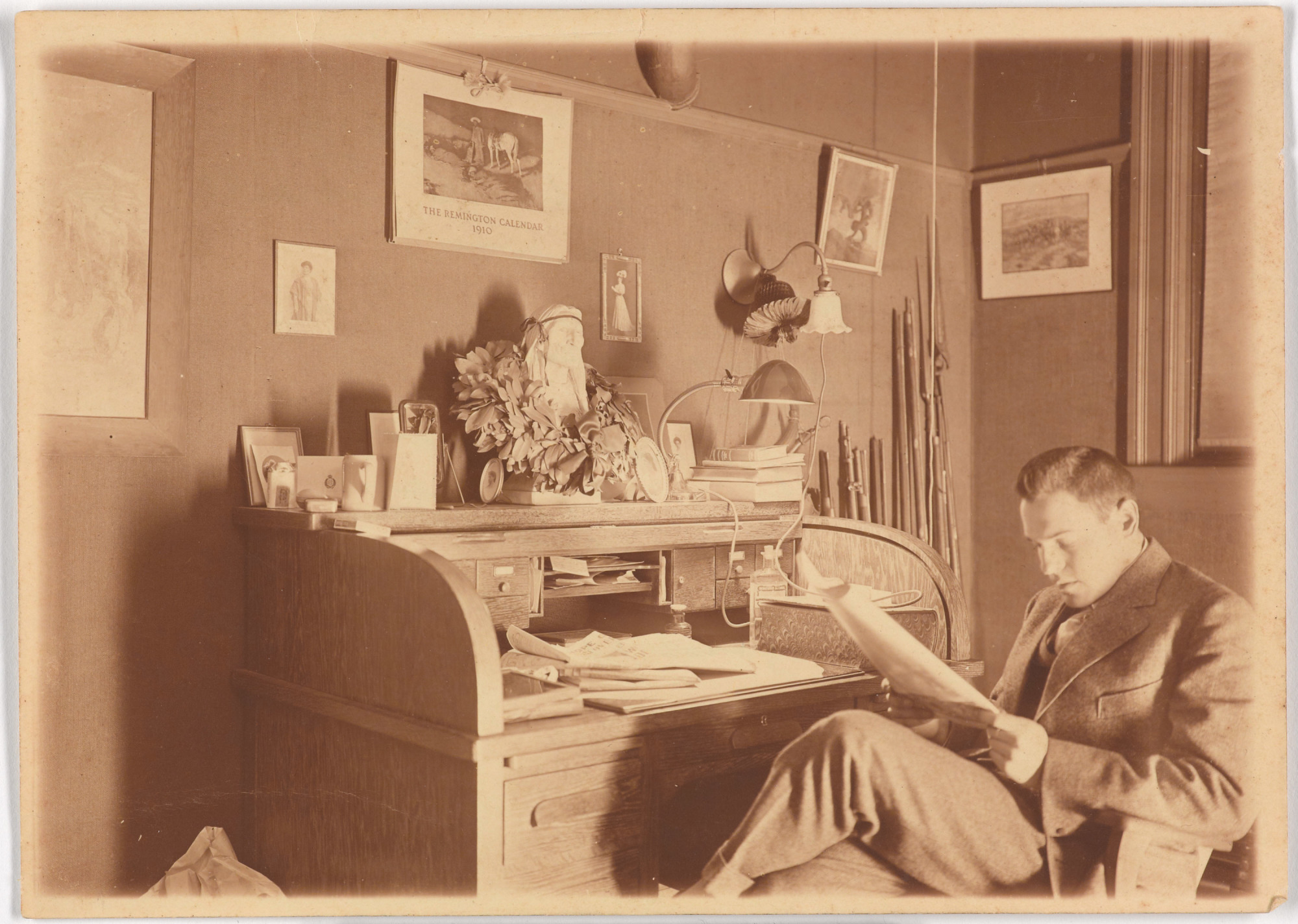Timeline
Erwin E. Smith’s life has been chronicled by B. Byron Price in Imagining the Open Range: Erwin E. Smith, Cowboy Photographer (Amon Carter Museum of American Art, 1998). The information cited in this chronology is based on this account as well as the Erwin E. Smith Papers and the Mary Alice White Pettis Collection of Erwin E. Smith Papers.
1880s and 90s
1886
On August 22, Erwin Evans Smith is born to Albert Alexander Smith and Nancy Erwin Smith in Honey Grove, Texas. Albert is a successful merchant and Nancy is the granddaughter of one of the town’s founders, Samuel Augustus Erwin Sr.
1890
In April, Albert dies of pneumonia when Nancy is seven months pregnant. Nancy gives birth on June 15, naming Smith’s younger sister “Albert” in her father’s honor.
1894
Nancy marries Percy Harmon White and moves the family 15 miles west to Bonham, Texas.
1900s
ca. 1901
Starts spending summers at JCS ranch in Foard County, which is owned by his uncle John C. Sanders. Already captivated by cowboy stories, he adopts “Bar Diamond Bar Ranch” as the brand for his nonexistent land and cattle.
Takes his first photographs of cowboys.
1904
Photographs and sketches the Louisiana Purchase Exposition, often called the St. Louis World’s Fair, which includes artwork of the American West by Frederic Remington, Henry Farny, Charles Schreyvogel, E. Irving Couse, Charles M. Russell, Cyrus Dallin, Adolph Weniman, and Solon Borglum. Also photographs Frederick T. Cummins’s “Wild West Indian Congress and Rough Riders of the World” show.
1905
From June to August, travels to different ranges in West Texas, spending most of his time at the Matador Ranch. Continues to make trips every summer for a number of years to photograph ranches and roundups, developing a business selling photographs to the cowboys and ranch bosses featured in them.
Around this time, writes:
“It is with a sad heart that I see [cowboys] vanish. My only means now to set them before my eyes and the public’s once more is to place them on canvas with paint & brush.”jump to citation[x]
Citations
- ↵ Smith, untitled manuscript, Axiom Composition notebook, undated [ca. 1905], unpaginated. Erwin E. Smith Collection, Nita Stewart Haley Memorial Library, Midland, Texas. Quoted in B. Byron Price, Imagining the Open Range: Erwin E. Smith, Cowboy Photographer (Fort Worth, TX: Amon Carter Museum of American Art, 1998), 102.
In the fall, moves to 34 Bellevue Place in Chicago and begins taking classes at the School of the Art Institute of Chicago, studying with sculptor Lorado Zadoc Taft.
Starts a correspondence with his younger sister’s classmate Gladys Harry, a chaste romantic relationship that continues until she marries in 1908.
1906
In January, National Magazine publishes Smith’s photographs of the previous summer in a feature called “Cowboy Life in the Far Southwest,” his first reproductions in a national publication.
On March 29, Smith’s half-sister, Mary Alice White, almost 20 years his junior, is born.
In May, he returns to Bonham. Acquires ranching and cowboy photographs by Laton A. Huffman, Evelyn J. Cameron, and Charles D. Kirkland.
In early fall, heads to cousin Edwin Sanders’s ED Ranch in Foard County, where he stays for almost three months. Returns to Bonham before Christmas.
1907
In spring, while describing to Gladys Harry the acceptance of his photographs by Recreation magazine, writes, “At first it was my intention to take them for publication, but later on I realized how valuable they would be to me as records or sketch notes. I made this last trip more to gather pictorial data for future use than any thing else as I realized that ranch life is fast giving way to the man with the hoe, and if I did not get my data now my chance would be lost forever.”jump to citation[x]
Transfers to the School of the Museum of Fine Arts, Boston where he studies with sculptor Bela Pratt. Intends to use his cowboy photographs to make paintings and sculptures.
Continues pursuing an interest in stories about the American West, through novels like Andy Adams’s Reed Anthony, Cowman (1907) and prints by Charles M. Russell and other artists.
Citations
- ↵ Erwin E. Smith to Gladys Harry, undated [ca. January–March 1907]. Erwin E. Smith Collection, Nita Stewart Haley Memorial Library, Midland, Texas. Quoted in Price, Imagining the Open Range, 27.
In July, heads to the LS Ranch in the Texas Panhandle, photographing there and in nearby towns like Tascosa for over two months.
In summer, writes to Gladys Harry:
“There is something inexpressibly lonely in the solitude of a prairie. […] I had the consciousness of being far, far beyond the bounds of civilization. It seemed as if you could see to the ends of a flat world.”jump to citation[x]
Returns to Boston for the fall term.
In November, around 40 prints of his images are displayed in the windows of the Boylston Street storefront of photography equipment company Pinkham & Smith. The exhibition inspires many passersby to reach out to Smith, including newspaper writer George Pattullo. The men begin a mutually beneficial friendship, although Pattullo proves opportunistic and over the next five years often relies on Smith for financial support.
Citations
- ↵ Erwin E. Smith to Gladys Harry, undated [ca. August 1907]. Copy in Erwin E. Smith Collection, Nita Stewart Haley Memorial Library, Midland, Texas. Quoted in Price, Imagining the Open Range, 36.
1908
On January 12, George Pattullo’s article about Smith, “From Bronco Buster to Boston Art Student,” is published in the Boston Herald with photographs both by and of Smith. In the article, which romanticizes and exaggerates Smith’s cowboy experience, the artist praises Russell’s work above Remington’s: “Some of Frederic Remington’s illustrations are magnificent. I admire them, particularly his Indians, who are very accurately drawn. But in certain of his pictures, in not a few of them, in fact, Mr. Remington has not been accurate. This is probably due to the fact that he doesn’t know the men and the life with that thorough knowledge an artist who paints it should have. One must live among them to acquire it.”jump to citation[x]
In June, Photo-Era publishes Pattullo’s article “Glimpses of Cowboy Life in Texas” with over 20 images by Smith.jump to citation[x]
Also in June, Smith photographs performers at the combination “Two Bills” show playing outside Boston: Buffalo Bill’s Historic Wild West and Pawnee Bill’s Great Far East Wonderland.
Citations
- ↵ George Pattullo, “From Bronco Buster to Boston Art Student: Erwin E. Smith, Panhandle Cowboy, Has Finest Pictures of Range Life Ever Taken, and Now Is Studying to Perpetuate Life of Plains,” Boston Herald (The Sunday Herald), January 12, 1908, 1.
- ↵ George Pattullo, "Glimpses of Cowboy Life in Texas,” Photo-Era, vol. 20 (June 1908), 288–96.
In July, Saturday Evening Post publishes Patullo's short story “Blackie, Texas Night Horse,” based on Smith’s experiences and accompanied by several of Smith’s images.
Pattullo accompanies Smith on his summer trip, starting at JA Ranch and Matador Ranch in Texas, before continuing into New Mexico. They return to Bonham sometime before October.
In October, Saturday Evening Post publishes another article by Pattullo called “The Outlaw,” with five Smith photographs.
In the fall, Smith returns to Boston, continuing his sculpture work.
In December, travels to Canada to spend Christmas with Pattullo and his family.
1909
In January, an article by Smith’s childhood friend Harry Peyton Steger, now an editor at Doubleday, Page & Company, is published in the magazine The World’s Work.jump to citation[x] In it, Smith again compares Remington unfavorably to Russell, 11 months before the former dies. Some readers quibble with his use of the term “sunfisher” for a rearing horse, claiming it only applies when the horse is twisting while bucking.
Citations
- ↵ Harry Peyton Steger, “Photographing the Cowboy as He Disappears,” The World’s Work, vol. 17, no. 3 (January 1909): 11011–11124. A few months later Steger published “A Texas Boy in Boston and His Work in Western Art,” Holland’s Magazine, vol. 28 (June 1909): 26–28.
In June, starts out for his annual summer trip, again with George Patullo. The two travel from Bonham through West Texas to New Mexico and Arizona, also making a short excursion into Mexico.
In September, a Smith photograph is incorporated into an illustration by Maynard Dixon, the western artist and former husband of Dorothea Lange. Smith and Dixon correspond off and on for a few years.
Smith returns to Boston in the fall, although he does not resume classes until January 1910.







